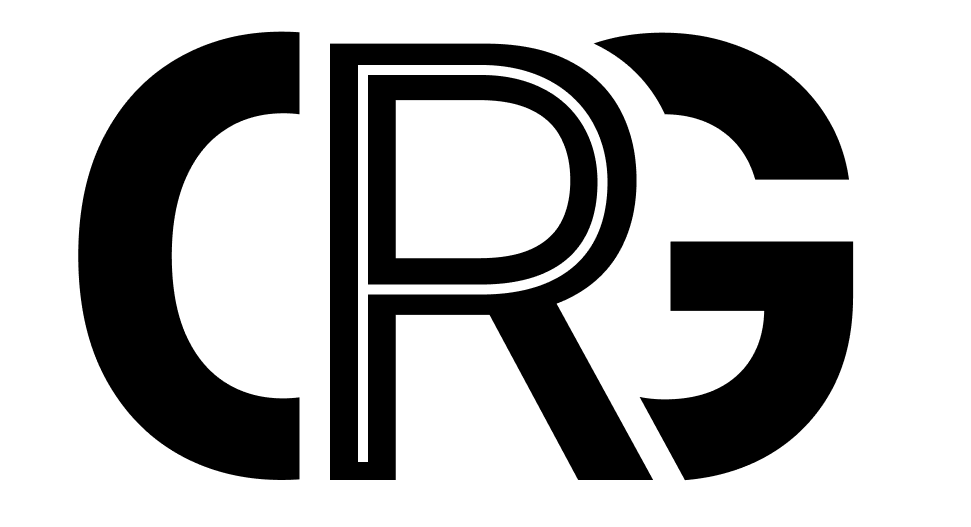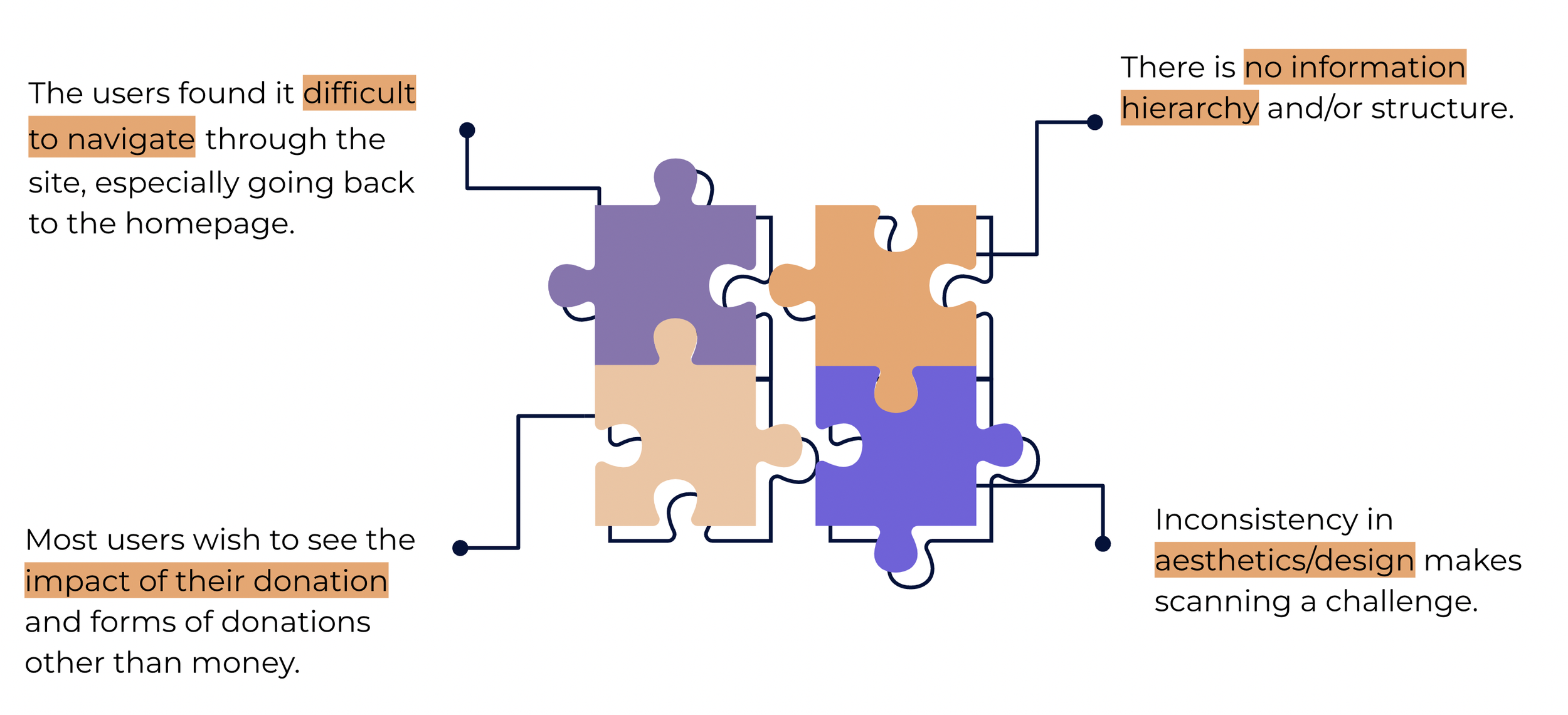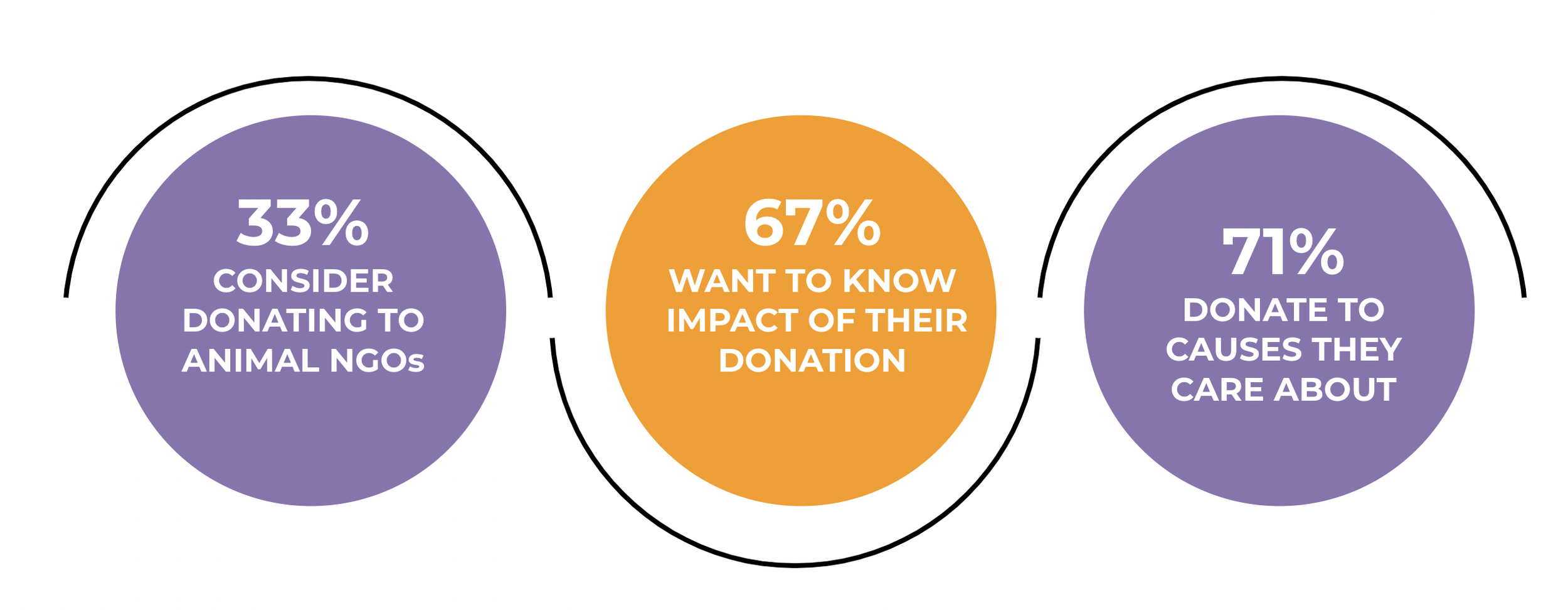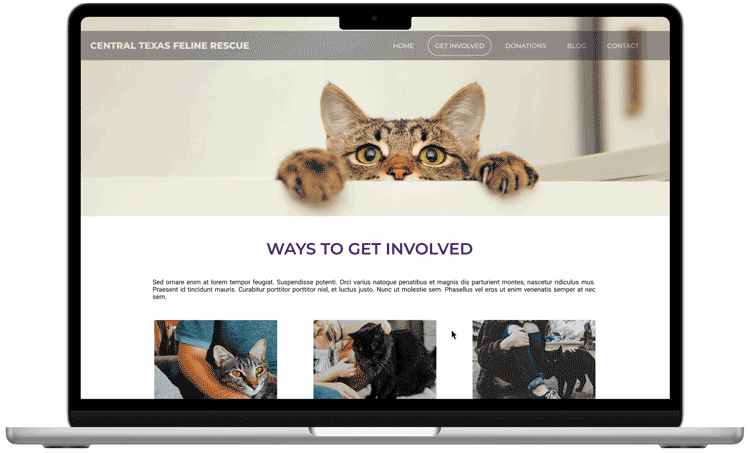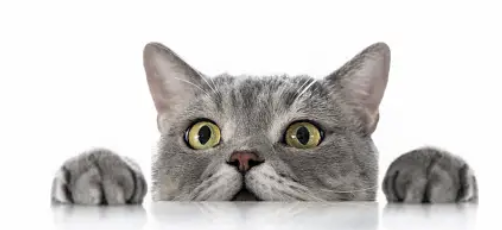Central Texas Feline rescue
Website Redesign
A website redesign, including a visual branding and content strategy to increase accessibility, expand brand awareness, and ultimately increase donations and volunteer involvement for a non-profit animal rescue.
Role: UX Designer, User Research, Content Designer.
Complementary Researcher: Youstina Metyas
Tools: Figma, FigJam, Miro, Adobe Creative, Google Suite,
Timeline: 12 months
Process: Research, Ideation, Prototyping, and testing. Repeat.

EMPATHIZE
THE BUSINESS
Founded in 2007 – C.T.F.R. is a non-profit organization located in Austin, Texas, whose volunteers feed and manage over 145 feral cats in dozens of colonies daily.
With the support of donors, they help feral cats live out their best days with the safety of clean food, water, and medical care.
THE PROBLEM
The outdated and disorganized website presents a significant challenge for users, hindering their ability to navigate effectively and complicates their ability to locate the information they need.
Moreover, the absence of branding elements fails to establish an emotional connection with users, impacting their involvement with the rescue.
THE GOAL
Craft a website that fosters empathy and resonates with the organization's mission and values, aiming to boost donations and volunteer involvement.
Establish a robust and cohesive brand identity to instill trust in users and enhance the perception of legitimacy, ultimately driving increased donations.
Design Direction
Crafting a Compelling Branding
MID-FI Screens & Testing Insights
Unveiling bad User Experience
Through the Heuristic Evaluation
KEY FINDINGS
I conducted five Zoom interviews and several live interviews
to glean insights about the website.
My primary goal was to ascertain:
Whether users could successfully complete core tasks, such as locating the donation button.
The ease or difficulty users experienced while navigating the website, such as finding a list of cats for adoption.
Overall impressions of the website's aesthetics.
-
As a user researcher, my focus was on uncovering three key objectives:
Strategies to enhance donations for Central Texas Feline Rescue.
Methods to effectively communicate our mission and values to a broader donor base.
Actions to guarantee the website's usability and accessibility for all users.
-
I utilized Google Forms to conduct an online survey, aiming to identify patterns and commonalities among potential users' preferences. Additionally, I conducted interviews both over Zoom and in person to gather comprehensive data.
One USER PERSONA emerged from our data
DEFINE
Here are the key insights gathered:
Users emphasize the importance of shelters having a stronger social media presence to engage with the younger generation effectively, and to encourage active participation and involvement in the non-profit's activities and initiatives.
Respondents advocate for organizations to offer alternative donation methods beyond monetary contributions.
Understanding the tangible impact of their donations or time motivates users to contribute to animal shelters through volunteering or donations.
Armed with this wealth of data, I crafted the user persona for Central Texas Feline Rescue.
This persona guided me in devising targeted solutions aimed at addressing her specific pain points and frustrations.
Elisa, an animal lover with limited donation experience, seeks to emotionally connect to confidently support them through both monetary and non-monetary means.
How might we help Elisa connect with a trustworthy non-profit animal rescue?
Please meet Elisa Maria and her rescued cat, Snowball!
IDEATE
Enhancing User Experience with a New Sitemap
Through storyboarding, I identified gaps in my design thinking, enhancing the overall user experience.
For Central Texas Feline Rescue, prioritizing information organization was paramount. The existing website faced challenges such as an overly lengthy navigation bar, empty content pages, and redundancy. To address these issues, a new site map was meticulously crafted to enhance usability, enabling users to swiftly accomplish their tasks and move forward with their day.
Now it's time to create a UI Style Guide, encompassing essential interface details to maintain consistency and elevate the rescue branding.
Regarding color choices, I've retained the original orange, appealing to the younger generation and symbolizing motivation and warmth.
Additionally, purple, representing sensitivity and compassion, has been incorporated. Together, these colors align with the organization's core values.
I exclusively crafted the iconography for use on the new website. The imagery was meticulously chosen to align with the branding. We also underwent a significant redesign of the logo to enhance its impact.
86% of users searched for information about the organization on the homepage.
While 53% of users found the FAQs helpful, they appear too frequently across multiple pages.
35% of users found the secondary navigation appears redundant.
74% of the users like the aesthetics of the new website.
66% of users appreciate reading testimonials from other volunteers before deciding to join.
87% of users desire more donation options beyond monetary contributions.
I initiated the research process by conducting a Heuristic Evaluation of the website.
The findings were stark: numerous design principles were neglected, resulting in an outdated, unappealing, and disorganized appearance that significantly impacted the user experience and affected the bussiness’ goals.
The initial usability test revealed that
users struggled to navigate the site.
WIREFRAMES & LO-FIS
prototype
BUT what Motivates donors to give?
Journey of Compassion
A User's Quest to Support Animal Rescue Efforts
INFORMATION ARCHITECTURE
USER INSIGHTS
Elevating User Experience
with Hi-Fi Screens
After the last round of usability tests, I iterated one last time, implementing all feedback collected, and here is the final product.
The Homepage: streamlined and well-organized navigation bar for enhanced user experience. It also has distinct sections, and the user can easily scan the page and find the information they are looking for, with appealing colors as aesthetics throughout.
The About Us page serves as a comprehensive resource, detailing the organization's programs and featuring a testimonial section. This content aids users in forging a meaningful connection with the rescue's mission and objectives.
The Donation page just got a facelift with the color brand for aesthetic consistency. And a suggestion for non-monetary donations (Amazon wish list) was included.
The Get Involved page encompasses all the options the user has to get involved with the organization - donation, fostering, or volunteering.
A Blog page that offers valuable resources to engage, educate, and inspire users to get involved with our mission.
LESSONS LEARNED
final thoughts
Did we even solve the problem?
During testing, we learned that Central Texas Feline Rescue's redesigned website motivates and empowers users to donate and understand the importance of their donations’ impact by creating a connection with their organization.
Design decisions were meticulously tailored to adhere to the organization's financial constraints and immediate needs, ensuring both practicality and efficacy while navigating the limitations of the CMS platform.
Thank you!
The organization reported an increase in donations by 26% and interest in adoption by 14%. The rescue is still actively seeking more volunteers to join their cause and contribute to their growth. I am grateful for the progress we made and the valuable lessons learned along the way.
The next steps include, but are not limited to refining visuals and design elements and adjusting the design as the organization grows and/or after collecting more data from tests and users.
Due to a lack of resources for development and/or volunteers to learn a new platform,
the founder opted to retain the current CMS platform where their website lives. This decision, however, constrains the implementation of certain design decisions outlined here.
